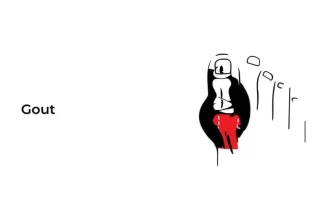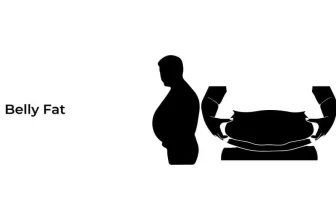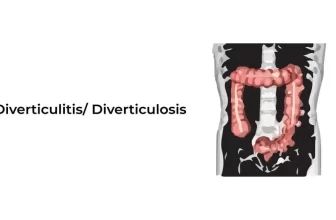Cholangitis refers to a swelling (inflammation) in the bile duct, which transports the bile from the individual’s liver and gallbladder into the duodenum. The duodenum is the first part of the individual’s small intestine.
In most cases, cholangitis occurs suddenly caused by a bacterial infection. Moreover, it can be long-term. In some individuals, cholangitis and inflammation are part of an autoimmune condition. It can also be broken down more specifically as the following;
- Immune cholangitis
- Primary Biliary Cholangitis (PBC)
- Primary Sclerosing Cholangitis (PCB)
- Secondary Cholangitis
Causes of Cholangitis
Cholangitis is usually caused by sludge or gallstones impacting the bile ducts and by a blocked duct somewhere in the individual’s bile duct system. Furthermore, autoimmune illnesses like primary sclerosing cholangitis may disturb the system. Following are the other common causes of cholangitis;
- Blood clot
- A tumor
- Swollen pancreas
- Shrinking of a duct
- A parasite infection
Individuals can also have cholangitis if they have;
- Bacteremia (blood infection).
- A backflow of bacteria from an individual’s small intestine.
- An examination is conducted to check the patient’s gallbladder or liver, such as an endoscope test.
The infection leads to pressure build up in an individual’s bile duct system, which can spread to other body organs if it is not cured timely.
Who is at higher risk for Cholangitis?
If an individual experiences gallstone, the chances of having cholangitis are greater. However, other risk factors include the following;
- A recent medical procedure consists of the bile duct area.
- Going through an autoimmune disorder, such as ulcerative colitis or Crohn’s condition, also referred to as inflammatory bowel disease.
- Traveling to countries where people might be exposed to parasites or worms.
- Having HIV (human immunodeficiency virus).
- PCB (more common in women), and PSC (more common in men).
- Cholangitis is commonly observed at the age of 30-50.
- Family history of cholangitis.
Possible indications of Cholangitis
The indications primarily differ from individual to individual and the type of cholangitis they are experiencing. Some early indications of chronic cholangitis include the following;
- Itchy skin
- Fatigue
- Dry eyes
- Dry mouth
Likewise, if an individual encounters chronic cholangitis for an extended period, then the patient is most likely to have the following symptoms;
- Night sweats
- Discomfort in the upper right side of the body
- Swollen ankles and feet
- Hyperpigmentation is the darkening of the skin
- Joint or bone pain
- Muscle pain
- Xanthomas fat deposits in the skin surrounding the eyelids and eyes
- Fluid in the stomach area (Bloating)
- Smooth bowel movements or diarrhea
- Fat deposits in the knees, elbows, palms, and soles of the feet
- Weight loss
- Clay-colored movement of the bowel
- Memory problems and mood swings
Additionally, if an individual is diagnosed with acute cholangitis, the patient might face the following symptoms;
- Chills
- Back pain
- Fever
- Vomiting
- Jaundice (yellowish eyes and skin)
- Nausea
- Dark urine
- Confusion
- Low blood pressure
Moreover, the healthcare provider might suggest various tests to identify the following symptoms of cholangitis in other body parts;
- Enlarged or swollen liver
- High cholesterol
- Enlarged or swollen spleen
- Hypothyroidism (the underactive thyroid gland)
- Osteoporosis, brittle or weak bones
Diagnosis of Cholangitis
After studying the symptoms of the patient, the healthcare provider may suggest the following diagnosis test;
- Complete Blood Count (CBC) Test: This examination measures the patient’s white blood cell count.
- The Liver Function Test: This test can help the consultant quickly analyze liver functionality and the patient’s liver enzymes range.
- Anti-mitochondrial Antibody (AMAs) test: The availability of AMAs and their results from other blood work may signify cholangitis.
- Blood Test: The doctor can suggest a blood test to detect any blood infection.
- Cholesterol Test: This test will aid in detecting the risk factor for gallstones, which can eventually cause cholangitis.
The healthcare provider can also suggest the following other imaging tests;
- CT-scan
- X-ray
- Endoscopic Retrograde Cholangiopancreatography (ERCP)
- Percutaneous Transhepatic Cholangiography (PTC)
Treatment of Cholangitis
The treatment for cholangitis varies on the type of cholangitis an individual has and how early the patient receives a diagnosis. Moreover, acute and chronic cholangitis (both)can lead to severe complications if not treated promptly. Early treatment is necessary for acute cholangitis, and the healthcare provider may prescribe the following treatment;
- Antibiotics
- Bile duct drainage
- IV intravenous fluids
- Endoscopic therapy
- Percutaneous therapy
- Surgery, a liver transplant
References:
- https://my.clevelandclinic.org/health/diseases/17715-primary-biliary-cholangitis-pbc-
- https://www.xiahepublishing.com/2310-8819/JCTH-2017-00028
- https://www.healthline.com/health/cholangitis#complications
- https://www.hopkinsmedicine.org/health/conditions-and-diseases/cholangitis#:~:text=What%20is%20cholangitis%3F,infection%2C%20and%20often%20happens%20suddenly






